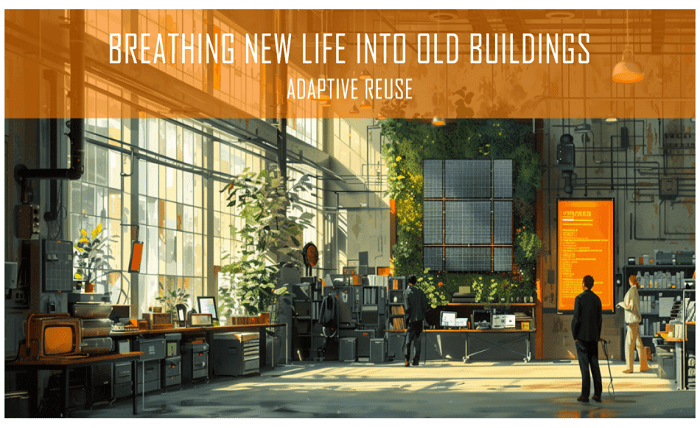Over the years, repurposing existing buildings has become increasingly popular to bring new life into old spaces. This trend is driven by various factors, including environmental concerns, economic considerations, and an appreciation for historic architecture. Repurposing buildings saves valuable resources by recycling materials and reducing waste. It also creates unique and vibrant spaces that can benefit communities socially and economically. Marco Bitran shares the art of repurposing buildings for community and profit.
The Benefits of Repurposing Buildings
Environmental Sustainability
One of the main benefits of repurposing buildings is its positive impact on the environment. Reusing existing structures requires less energy and resources to construct new buildings, reducing the carbon footprint and contributing to a more sustainable future. Additionally, repurposing buildings can prevent the demolition of historic structures, preserving their cultural and architectural significance.
Social Impact
Repurposed buildings have a significant impact on communities. They provide opportunities for new businesses to thrive, creating jobs and boosting local economies. These spaces also serve as gathering places for community events and activities, fostering residents’ sense of belonging and connection. The revitalization of old buildings can also improve the overall aesthetics of a neighborhood and increase property values.
Economic Advantages
Repurposing buildings offers economic benefits to both individuals and businesses. For individuals, it can provide affordable housing options in desirable locations. Repurposing existing structures can offer cost savings compared to constructing new buildings for businesses. Additionally, these unique spaces often attract customers looking for a one-of-a-kind experience, increasing foot traffic and potential profits.
Examples of Successful Building Repurposing
Adaptive Reuse: The High Line in New York City
The High Line is an example of successful adaptive reuse. It is an old elevated railway that was transformed into a public park. This project preserved the historic structure and created a new green space for the community. The High Line has become a popular tourist attraction, generating economic growth for the surrounding area.
Mixed-Use Development: Pittsburgh’s Strip District
In Pittsburgh’s Strip District, an old industrial warehouse was repurposed into a mixed-use development with retail shops and office spaces on the ground floor and residential apartments above. This project brought new businesses and residents to the area and preserved the neighborhood’s industrial character.
Creative Spaces: London’s Tate Modern
London’s Tate Modern is a prime example of creatively repurposing an old building. The art museum was once a power station, and its massive turbine hall now serves as an exhibition space for large-scale modern art installations. This project attracted tourists to the area and provided visitors a unique and inspiring experience.
Challenges of Repurposing Buildings
While repurposing buildings has numerous benefits, challenges can also be involved. One of the main challenges is ensuring that the building meets current building codes and safety regulations. This may require significant renovations and upgrades, which can be costly. Additionally, finding a suitable and profitable purpose for the building can be challenging, as not all structures are easily adaptable to a new use.
Marketing and Community Engagement Strategies for Repurposed Spaces
Marketing Strategies
Storytelling: Highlight the history and transformation of the building to create a compelling narrative.
Social Media: Use social media platforms to generate buzz and attract potential customers and tenants.
Events and Open Houses: Host events and open houses to showcase the space and engage with the community.
Community Engagement
Workshops and Meetings: Hold workshops and community meetings to gather input and address concerns.
Partnerships: Partner with local businesses and organizations to foster a sense of community and support.
Volunteer Opportunities: Offer volunteer opportunities to involve community members in the project.
Final Thoughts
Marco Bitran understands that repurposing buildings is an excellent way to breathe new life into old spaces while promoting environmental sustainability, social impact, and economic growth. With careful planning and consideration, repurposing projects can transform communities and provide unique opportunities for businesses and individuals. As the trend continues to gain popularity, we can expect to see more innovative and successful examples of building repurposing in the future.



